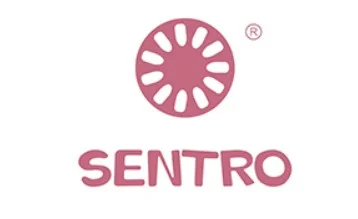The Technological Marvel of Knitting Machines: Revolutionizing Handicrafts
Aug 30, 2023
Introduction:
The realm of knitting, an ancient handicraft that has been practiced for centuries, is experiencing a remarkable transformation in the digital age. While traditional knitting involves intricate handwork, the advent of knitting machines has introduced a new era of efficiency and innovation to this time-honored art form. These technological marvels, driven by automation and precision engineering, have revolutionized the world of textiles and crafting. In this comprehensive exploration, we delve into the evolution, mechanics, creative possibilities, and societal impact of knitting machines, shedding light on their role in reshaping the landscape of fiber arts.
A Brief History and Evolution:
Knitting machines trace their roots back to the 16th century, with early versions focusing on the creation of basic textiles. However, it wasn't until the 19th and 20th centuries that significant advancements propelled knitting machines into the modern age. The introduction of mechanical and later electronic components paved the way for more intricate and complex designs. Today's knitting machines are a far cry from their humble origins, integrating cutting-edge technologies to streamline the knitting process and expand the horizons of creative expression.
Mechanics and Operation:
At the heart of a knitting machine's operation lies a meticulously designed system of needles, hooks, and yarn feeders. The process begins by selecting a pattern or design, which is then programmed into the machine's computerized interface. The machine's needles are arranged in a specific configuration, akin to the stitches in traditional knitting. Yarn is fed through the machine's guides and tensioners, with the needles and hooks working in tandem to create interlocking loops of yarn. The machine's carriage or mechanism then moves across the needles, automating the process of knitting row after row. The result is a seamless and precise fabric that can range from simple patterns to intricate motifs.
Expanding Creative Possibilities:
One of the most captivating aspects of knitting machines is their ability to facilitate intricate and elaborate designs with remarkable speed and precision. The integration of computerized programming allows crafters to experiment with a vast array of patterns, stitches, and textures. From classic cables and lacework to contemporary intarsia and Fair Isle motifs, knitting machines empower artisans to bring their visions to life in ways that were once arduous and time-consuming. Furthermore, these machines enable the creation of larger projects, such as blankets and garments, with consistent tension and flawless execution.
Empowering Artisans and Entrepreneurs:
The advent of knitting machines has democratized the world of textiles, making intricate designs and professional-quality products accessible to a wider range of individuals. Novices and experienced crafters alike can harness the power of knitting machines to bring their ideas to fruition. For entrepreneurs, knitting machines offer a unique opportunity to establish small businesses, as the efficiency of these devices allows for faster production and quicker turnaround times. This newfound accessibility not only fosters innovation but also contributes to the revitalization of the handicraft industry.
Impact on Sustainability and Fashion:
In an era marked by concerns about environmental sustainability, knitting machines have the potential to shape a more eco-friendly approach to fashion. The precise control over materials and production processes enables reduced waste and efficient use of resources. Artisans can experiment with various yarns, including eco-friendly and recycled fibers, to create sustainable and socially conscious designs. Additionally, the speed of knitting machines contributes to the "slow fashion" movement, encouraging consumers to invest in high-quality, locally produced items that stand the test of time.
Challenges and Future Prospects:
While knitting machines offer a myriad of benefits, they are not without challenges. The initial investment, technical learning curve, and maintenance requirements can pose barriers for newcomers. Additionally, concerns about the potential displacement of traditional hand knitting and the preservation of artisanal techniques must be addressed. However, as technology continues to advance, the industry is responding with user-friendly interfaces, comprehensive learning resources, and community-building efforts that bridge the gap between traditional and modern crafting.
Conclusion:
The emergence of knitting machines heralds a new chapter in the rich history of knitting and fiber arts. These ingenious devices marry centuries-old craftsmanship with cutting-edge technology, resulting in a marriage of efficiency, precision, and creativity. As knitting machines continue to evolve, they hold the potential to reshape the landscape of textiles, fashion, and artisanal entrepreneurship. By embracing these technological marvels while honoring the roots of traditional knitting, we can weave a tapestry of innovation that enriches our artistic expressions and fosters a more sustainable and connected world.
